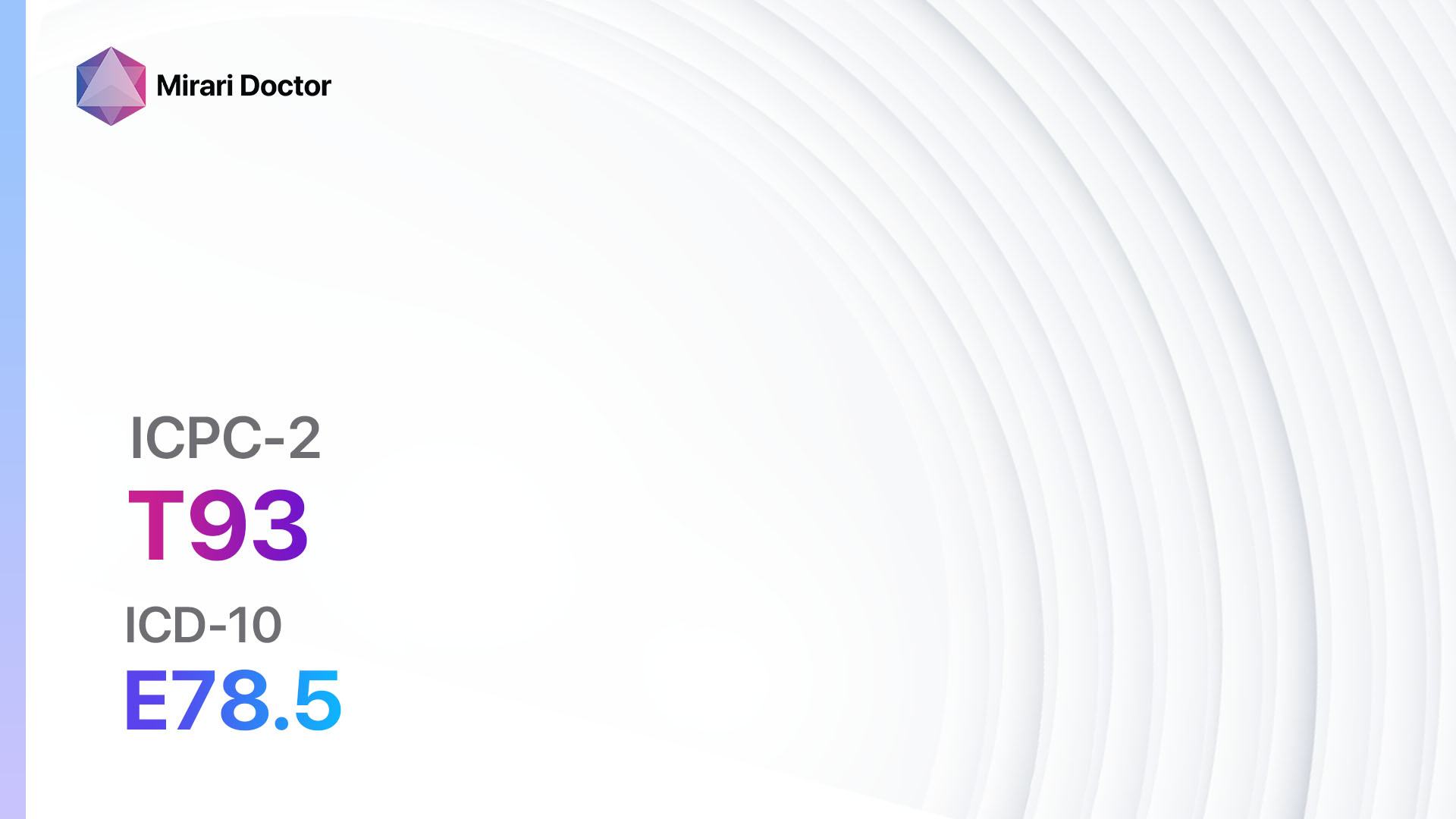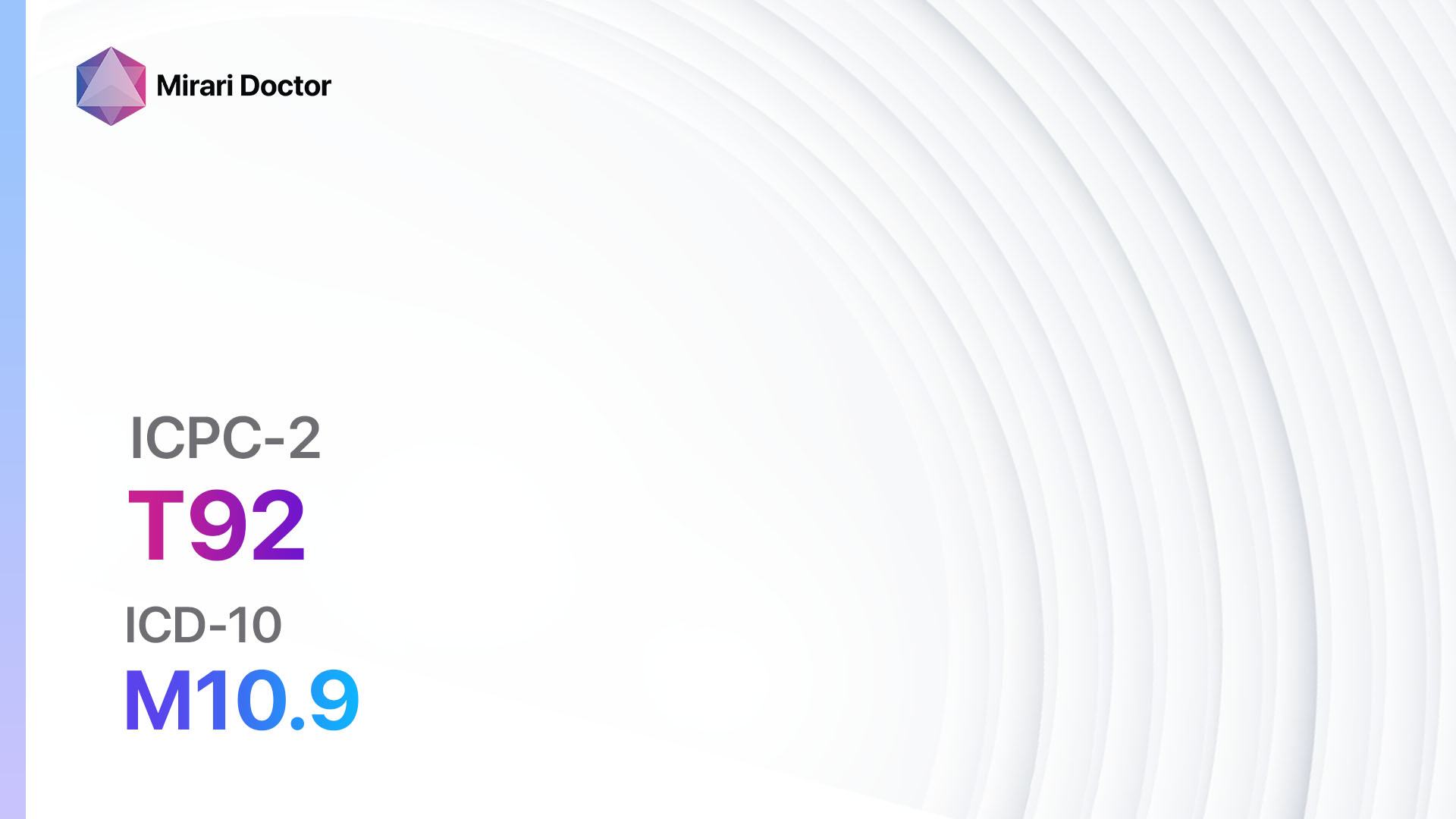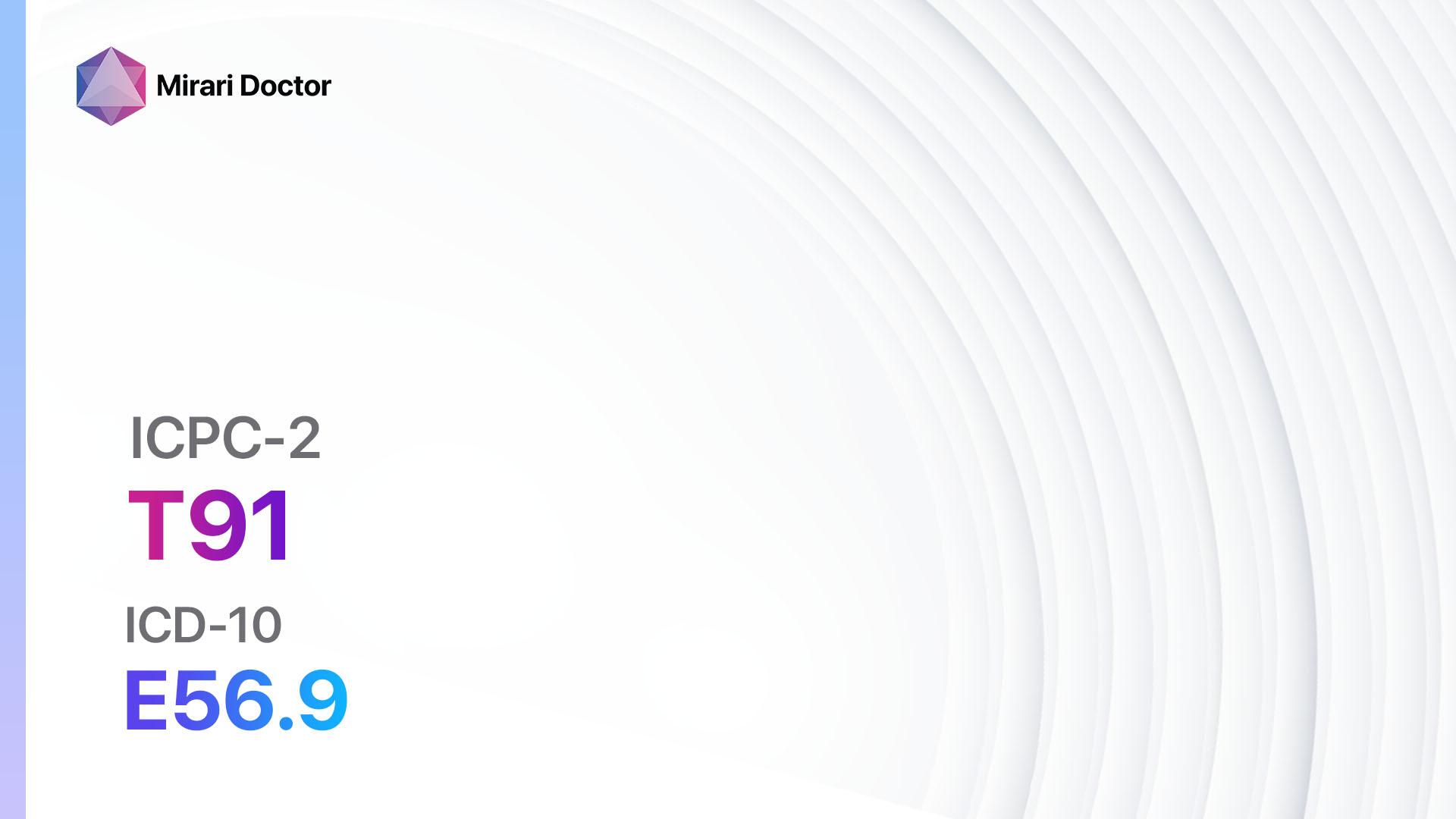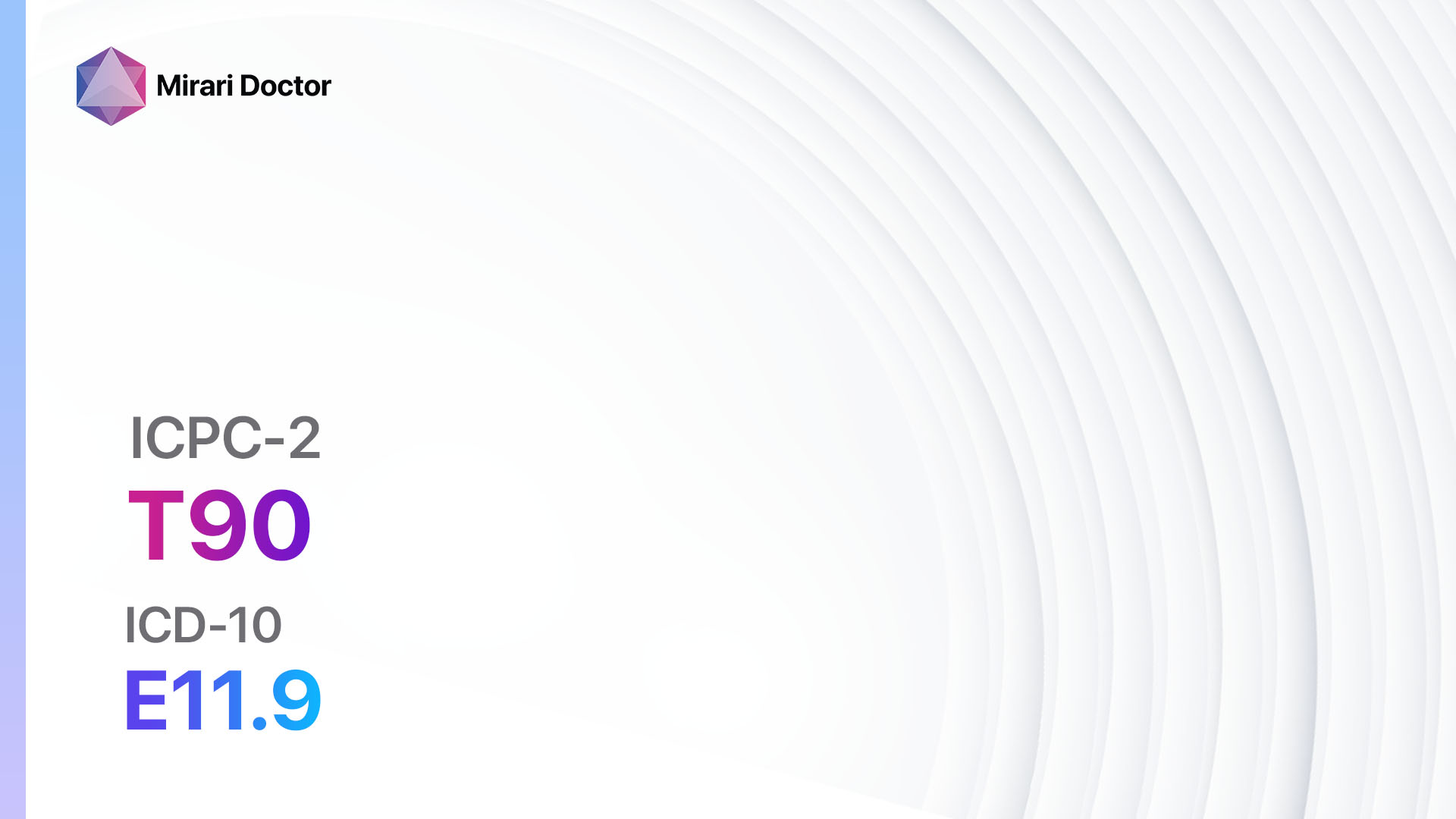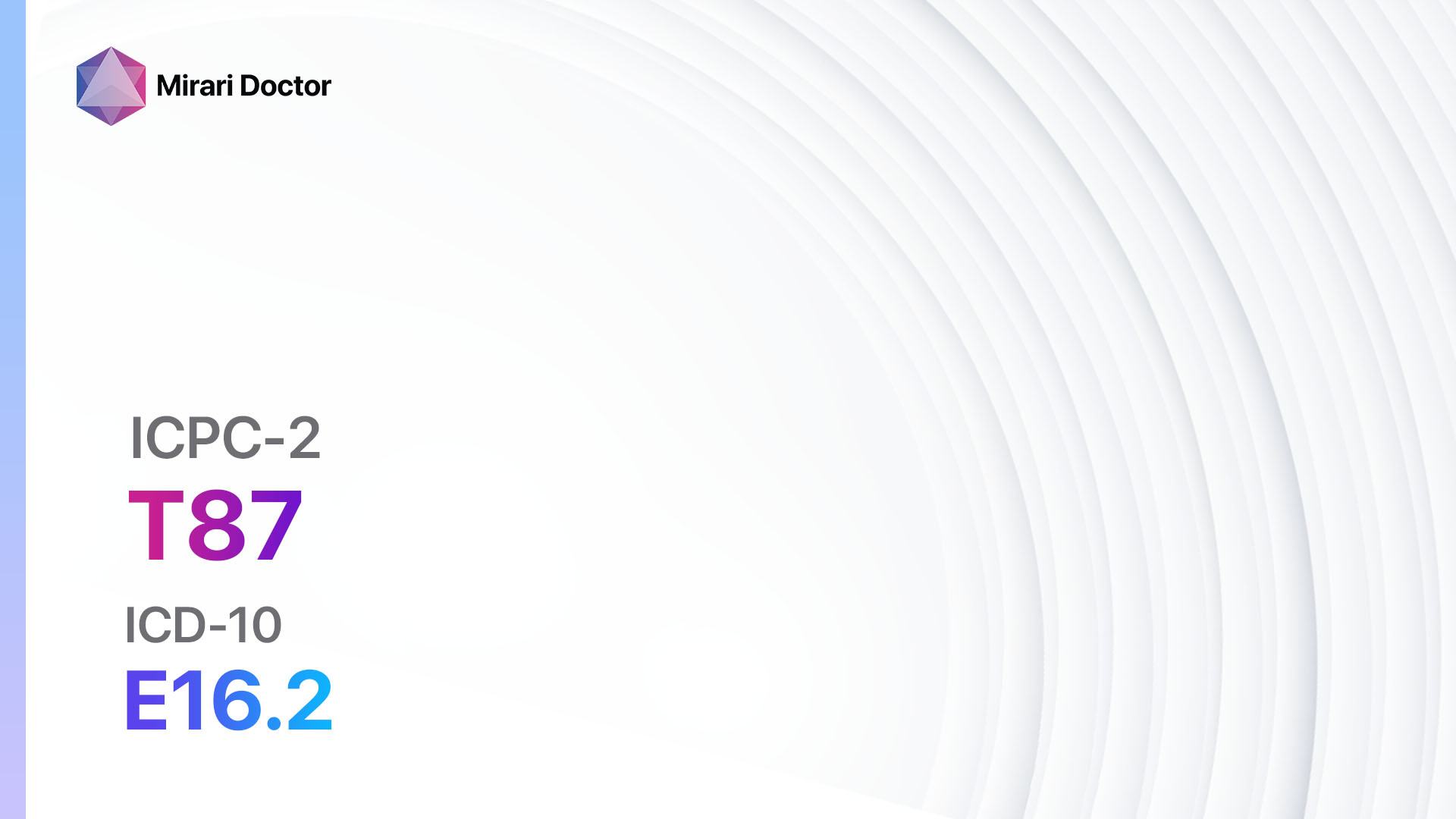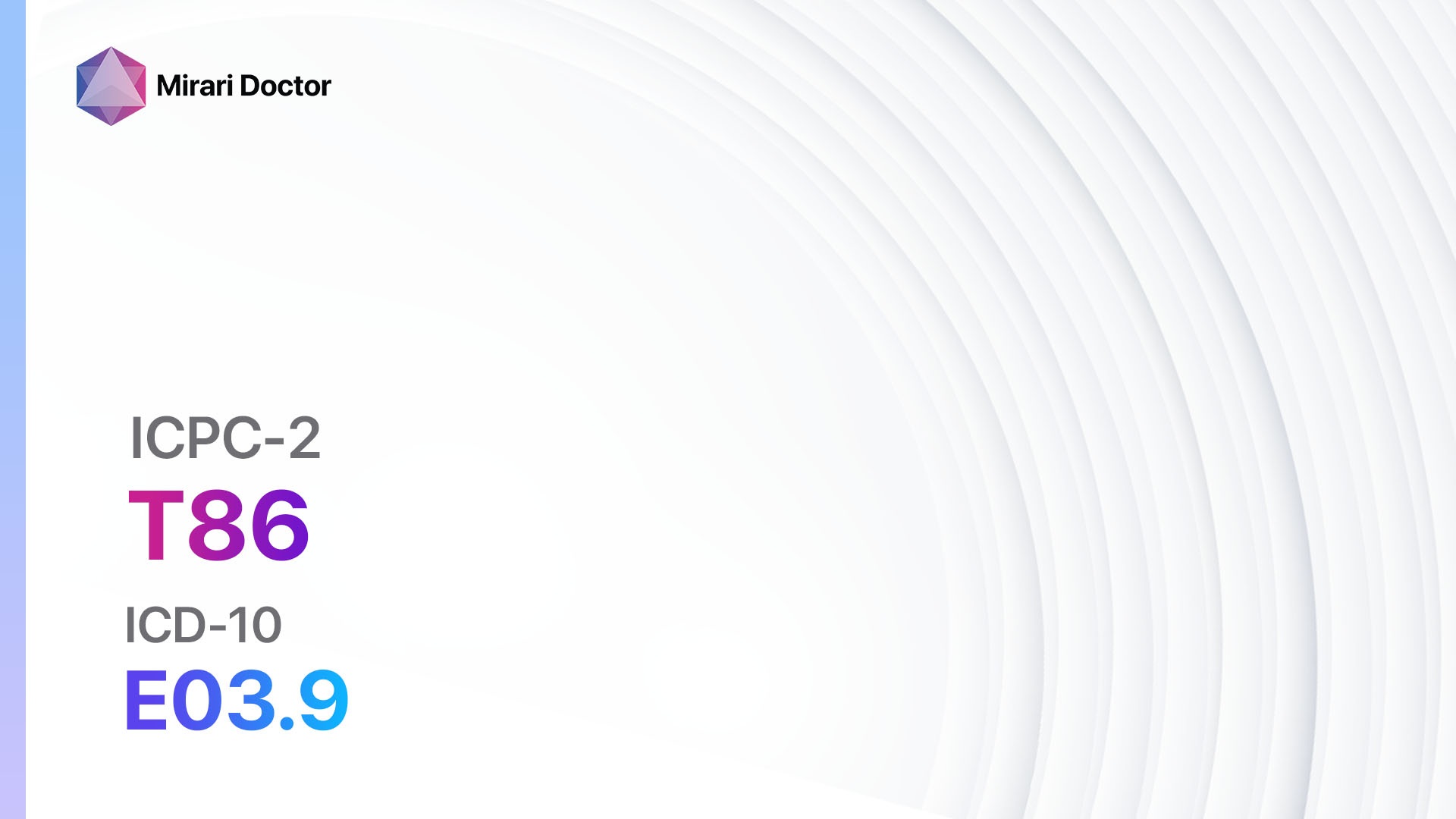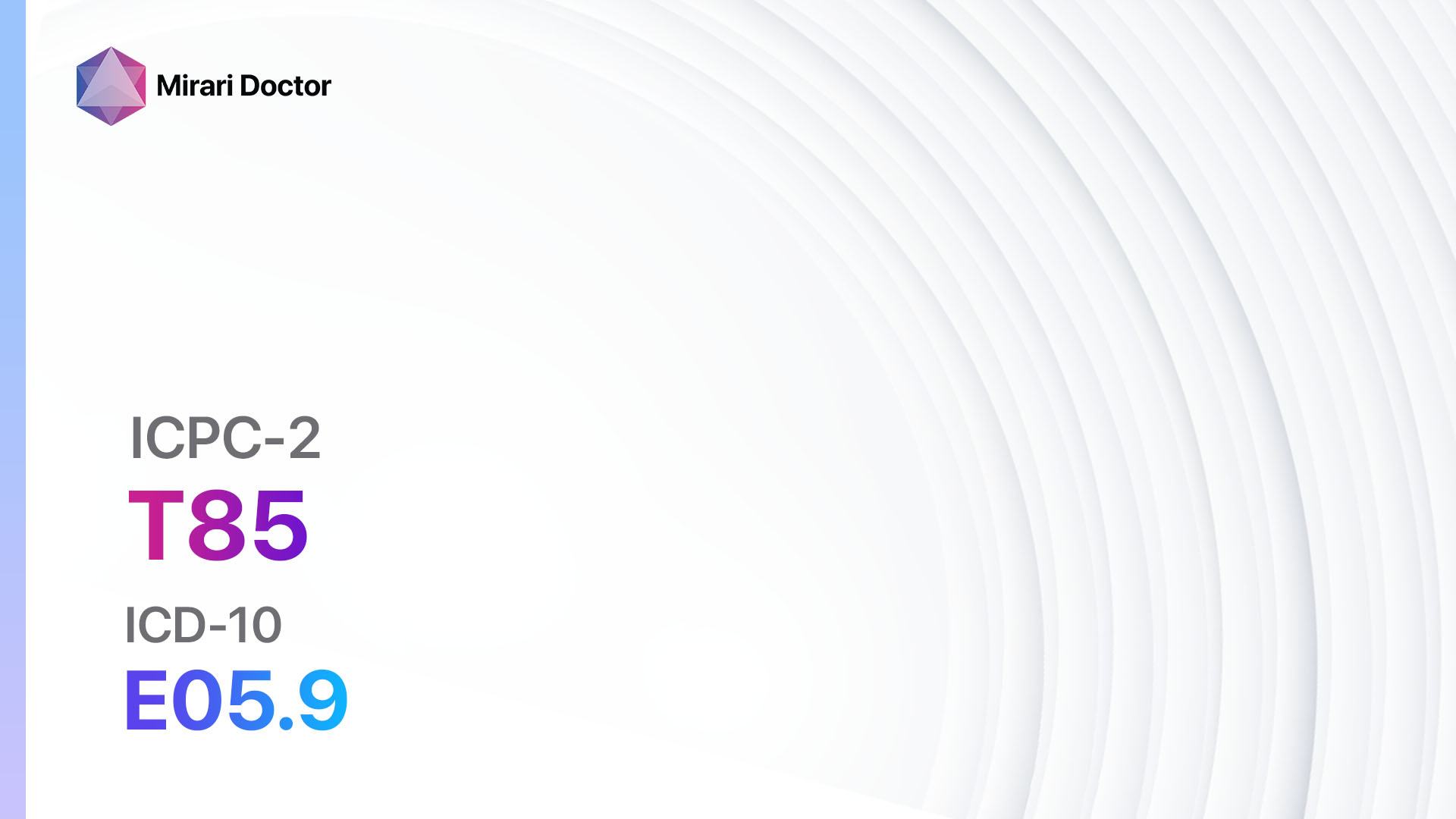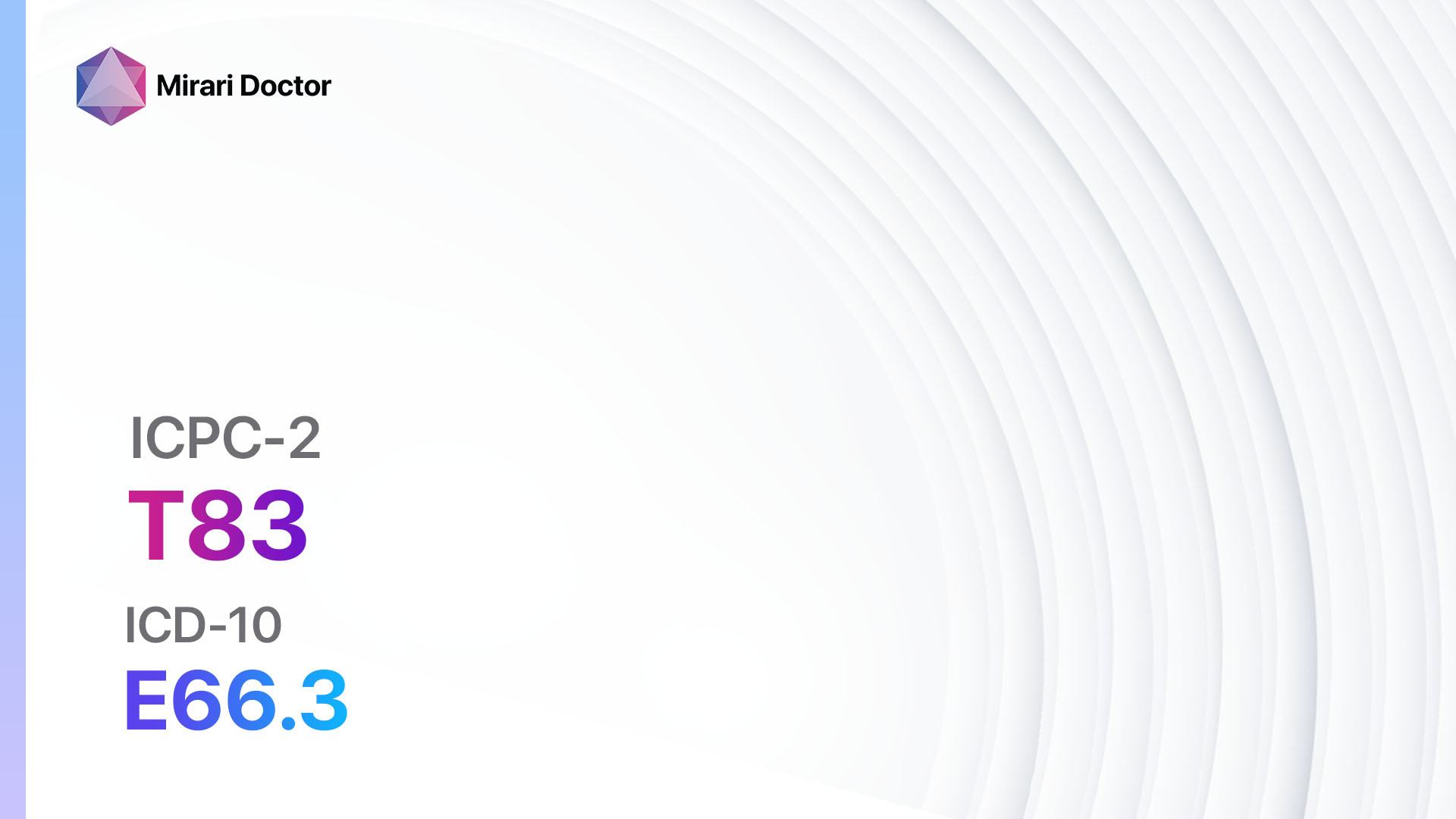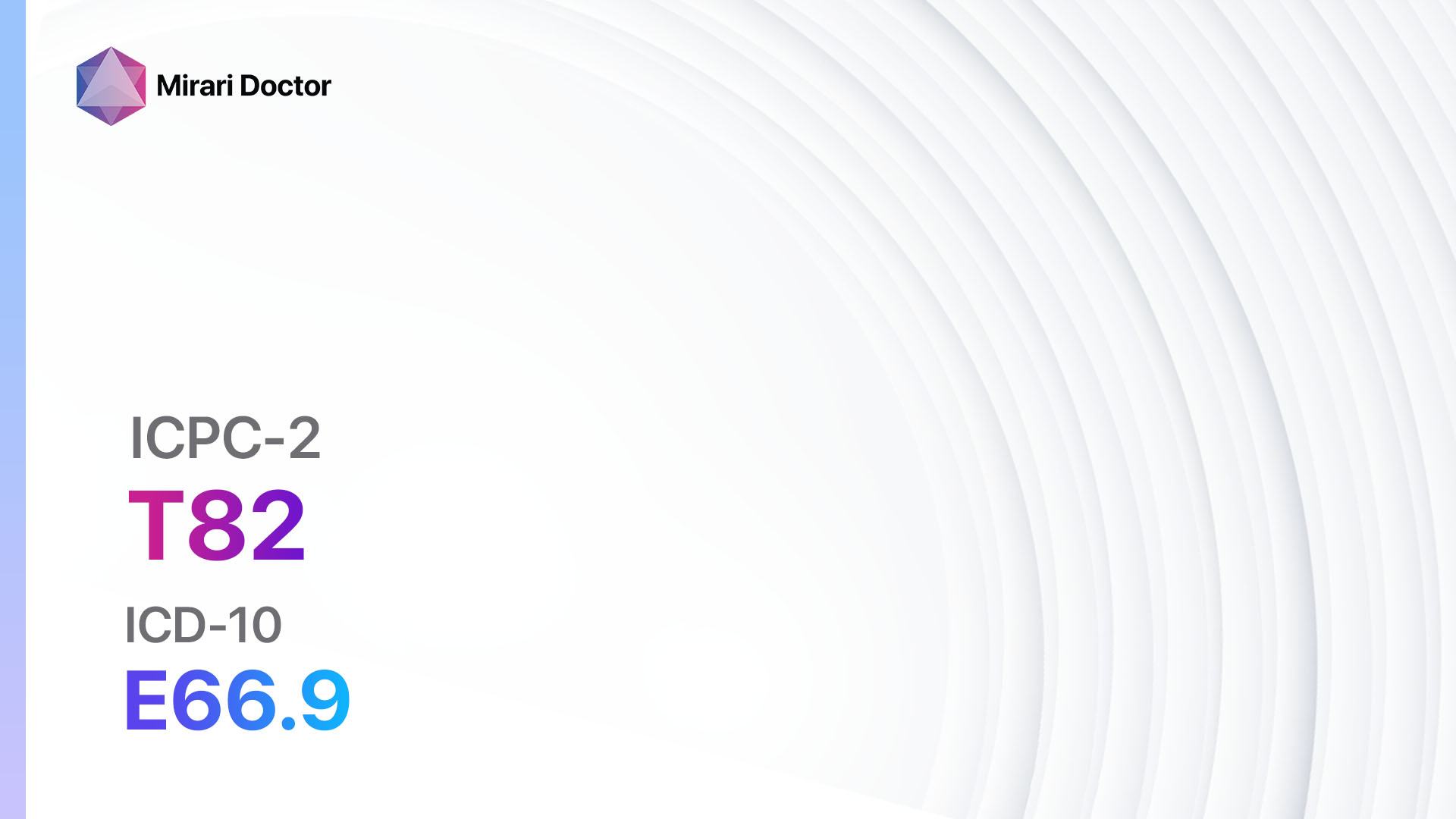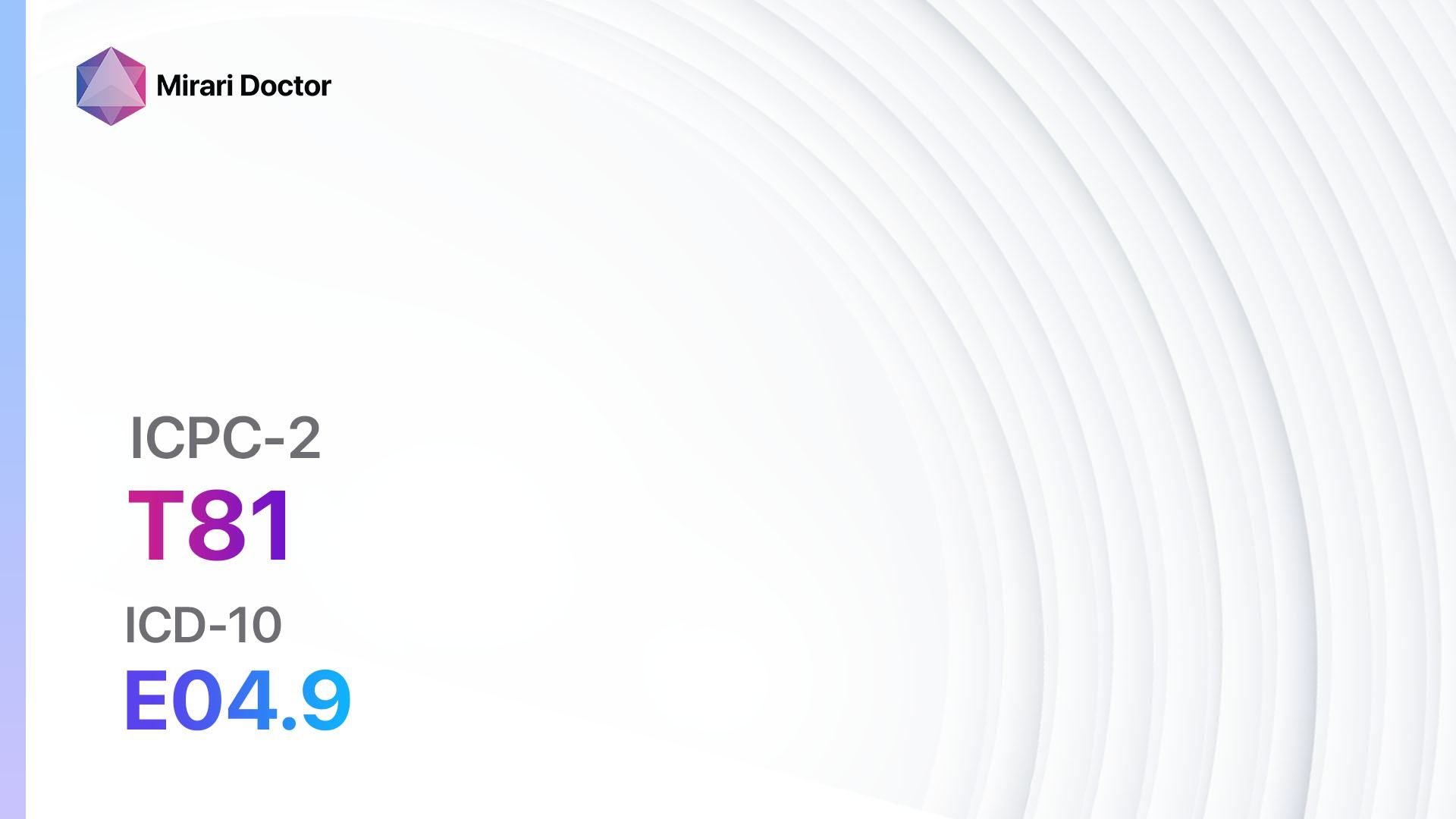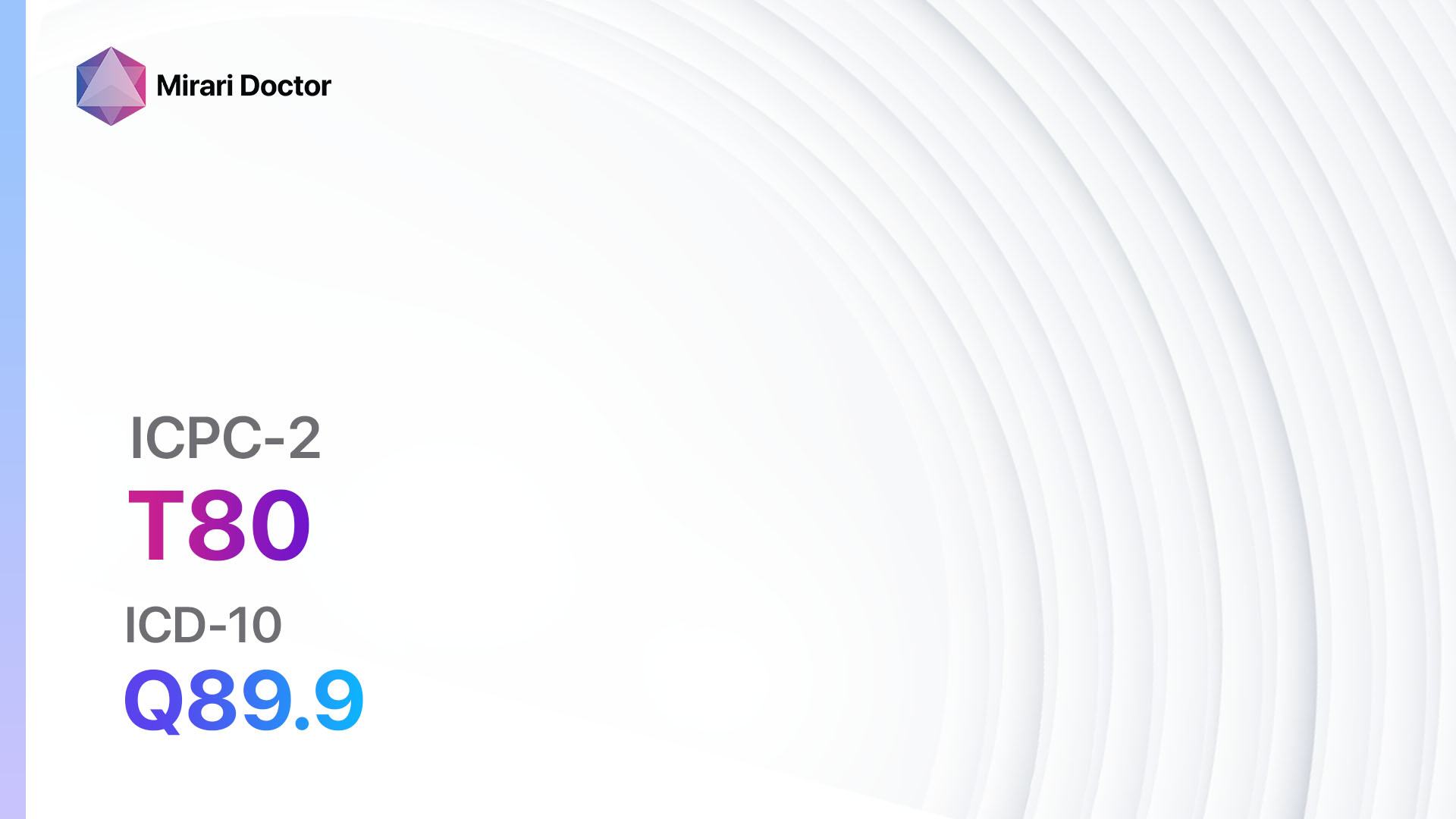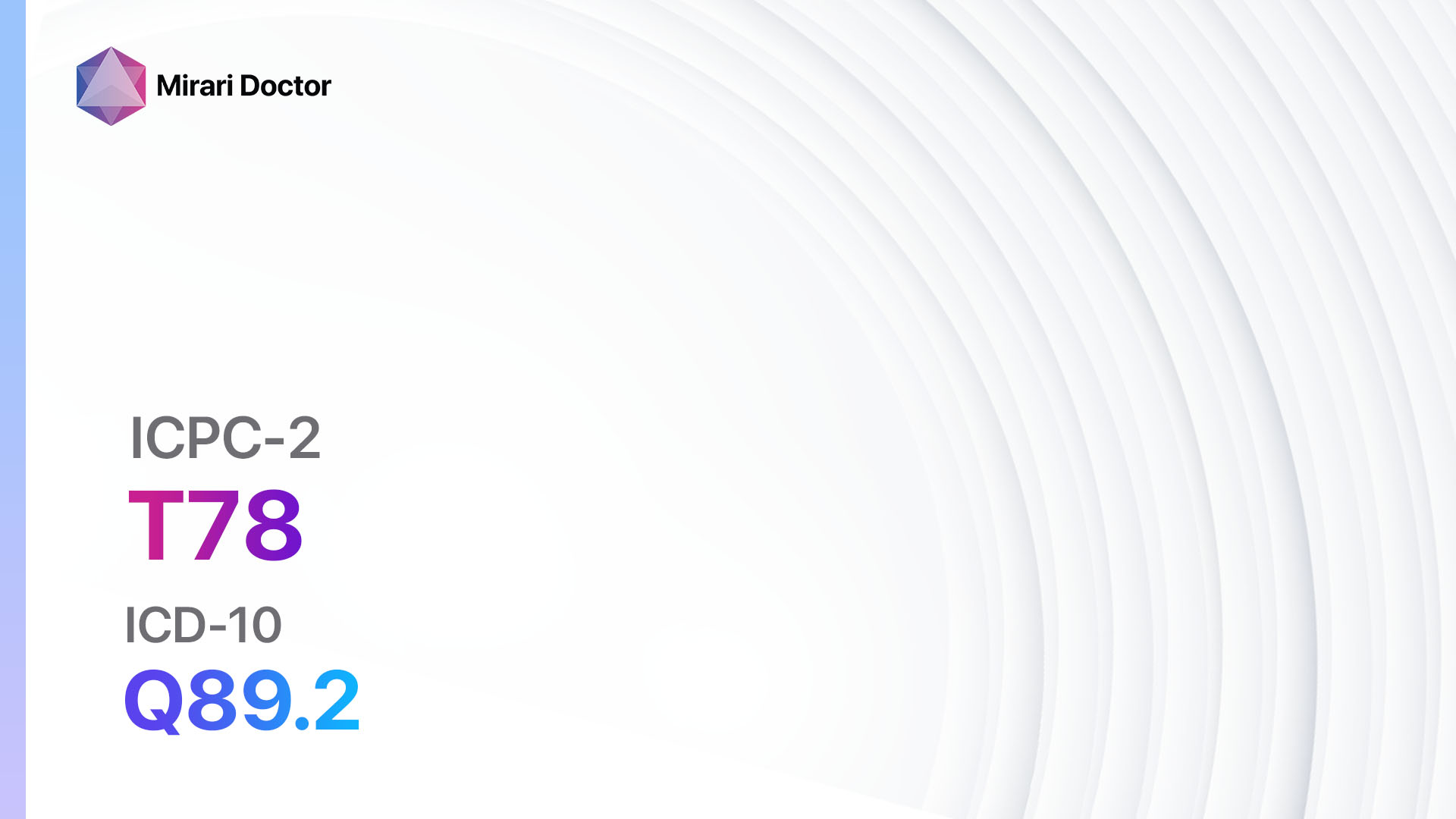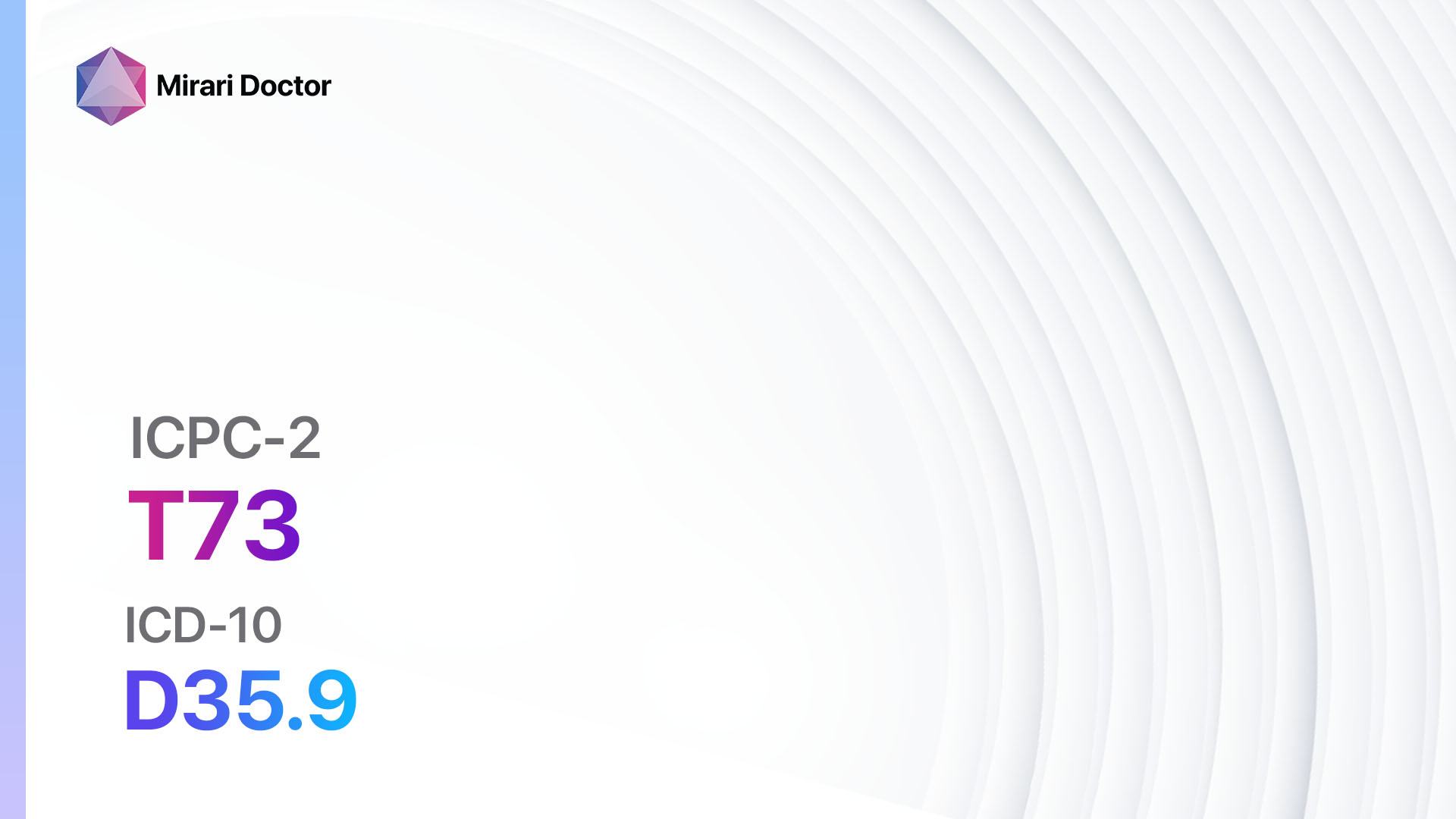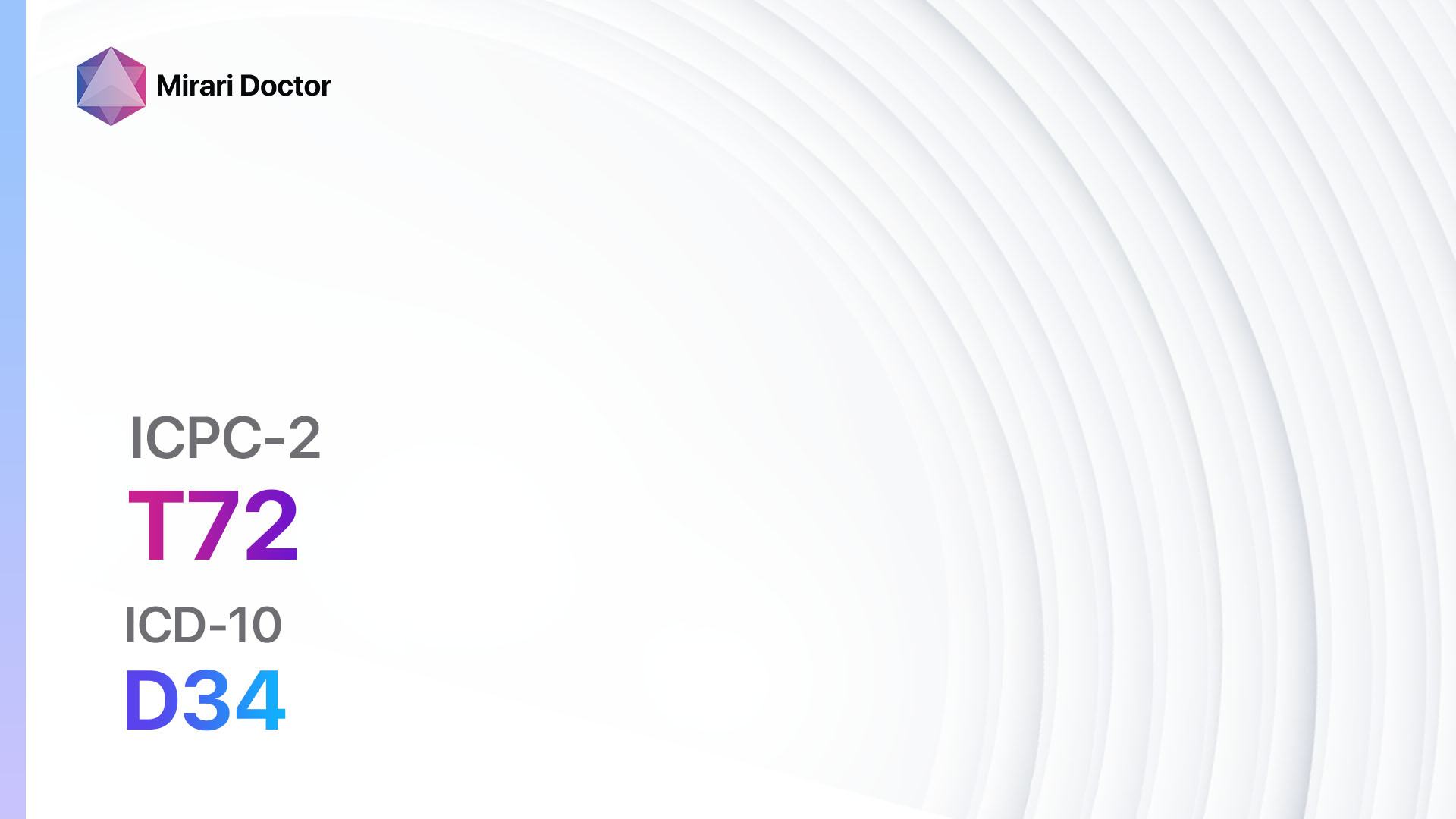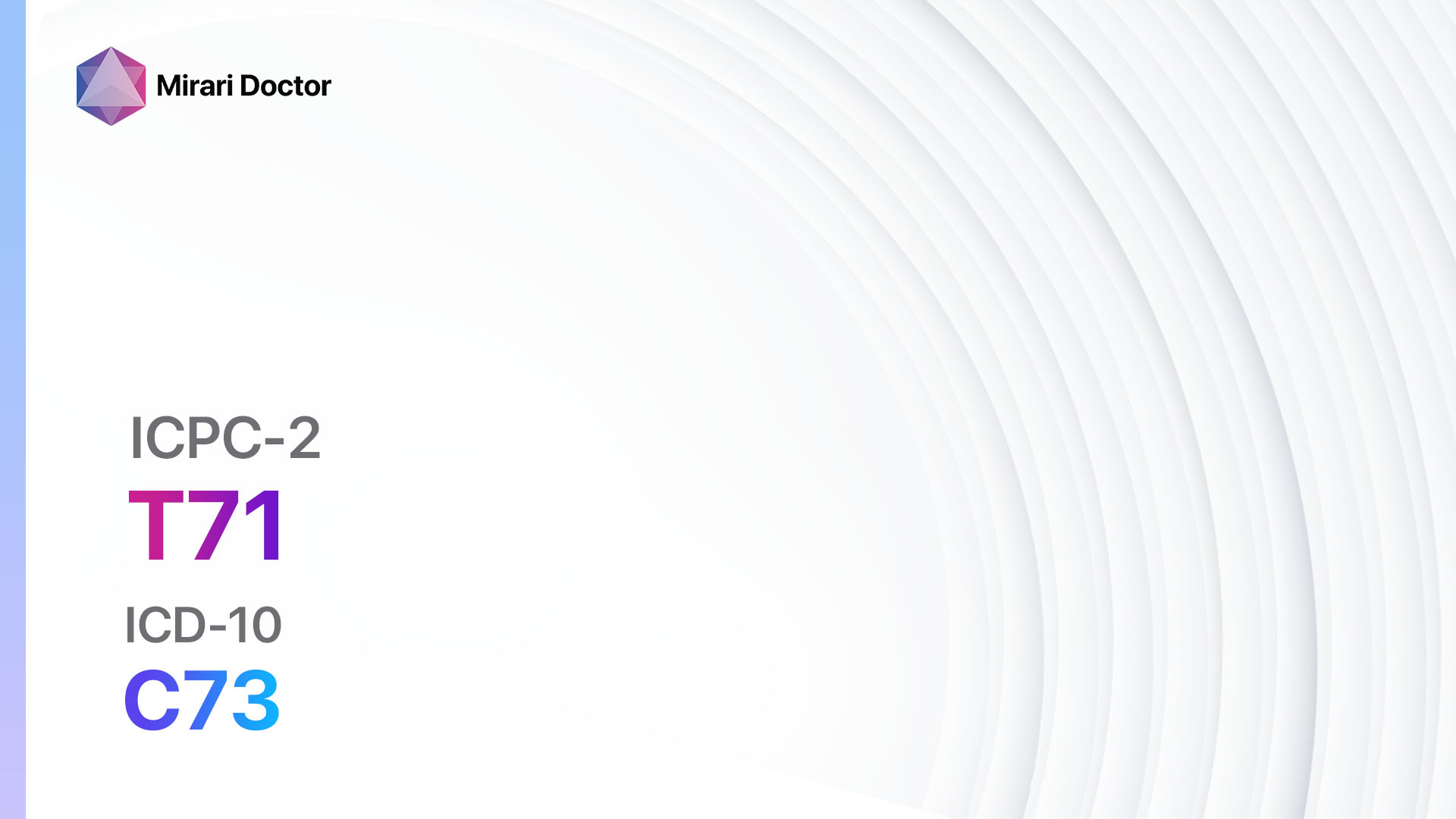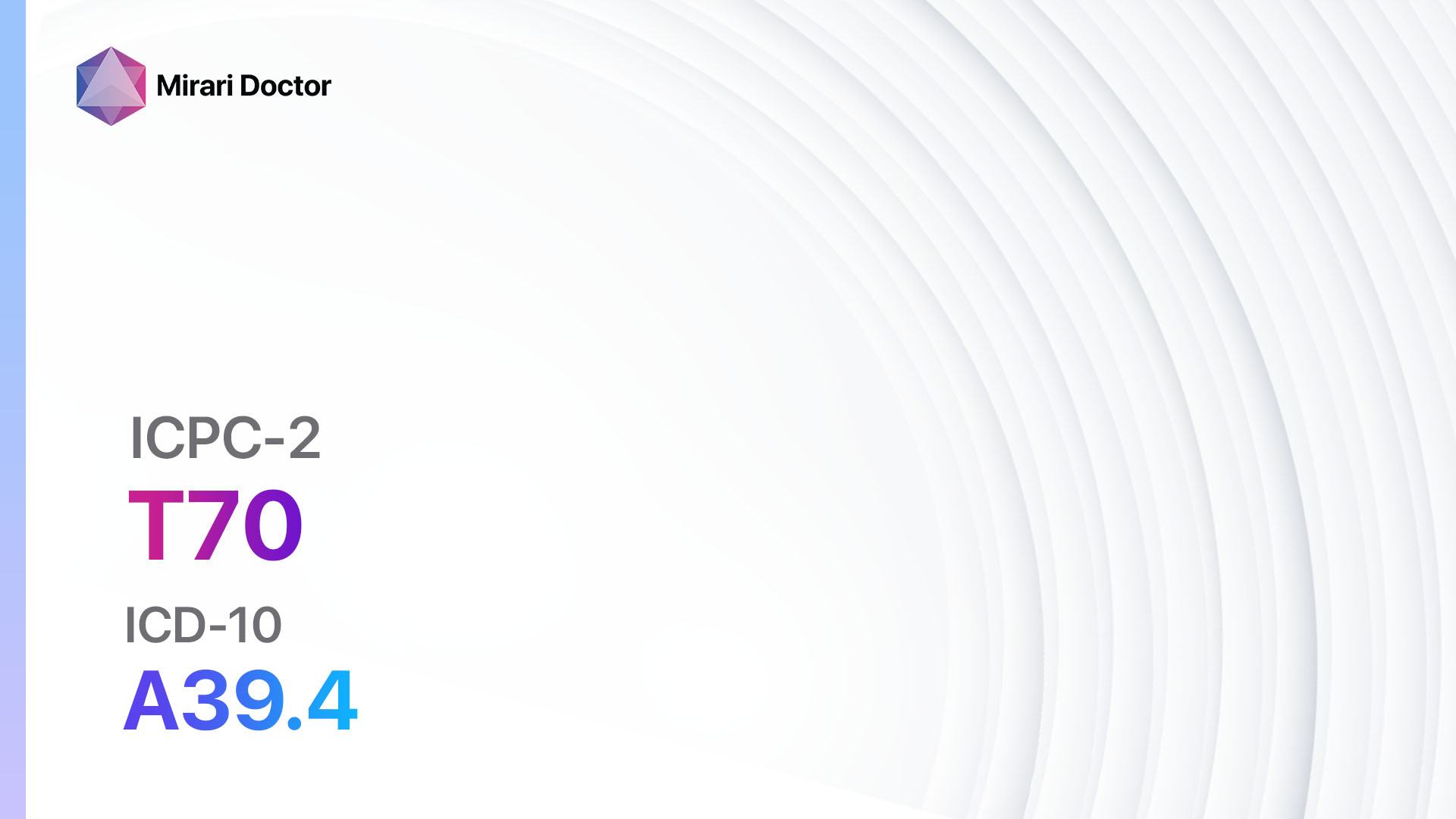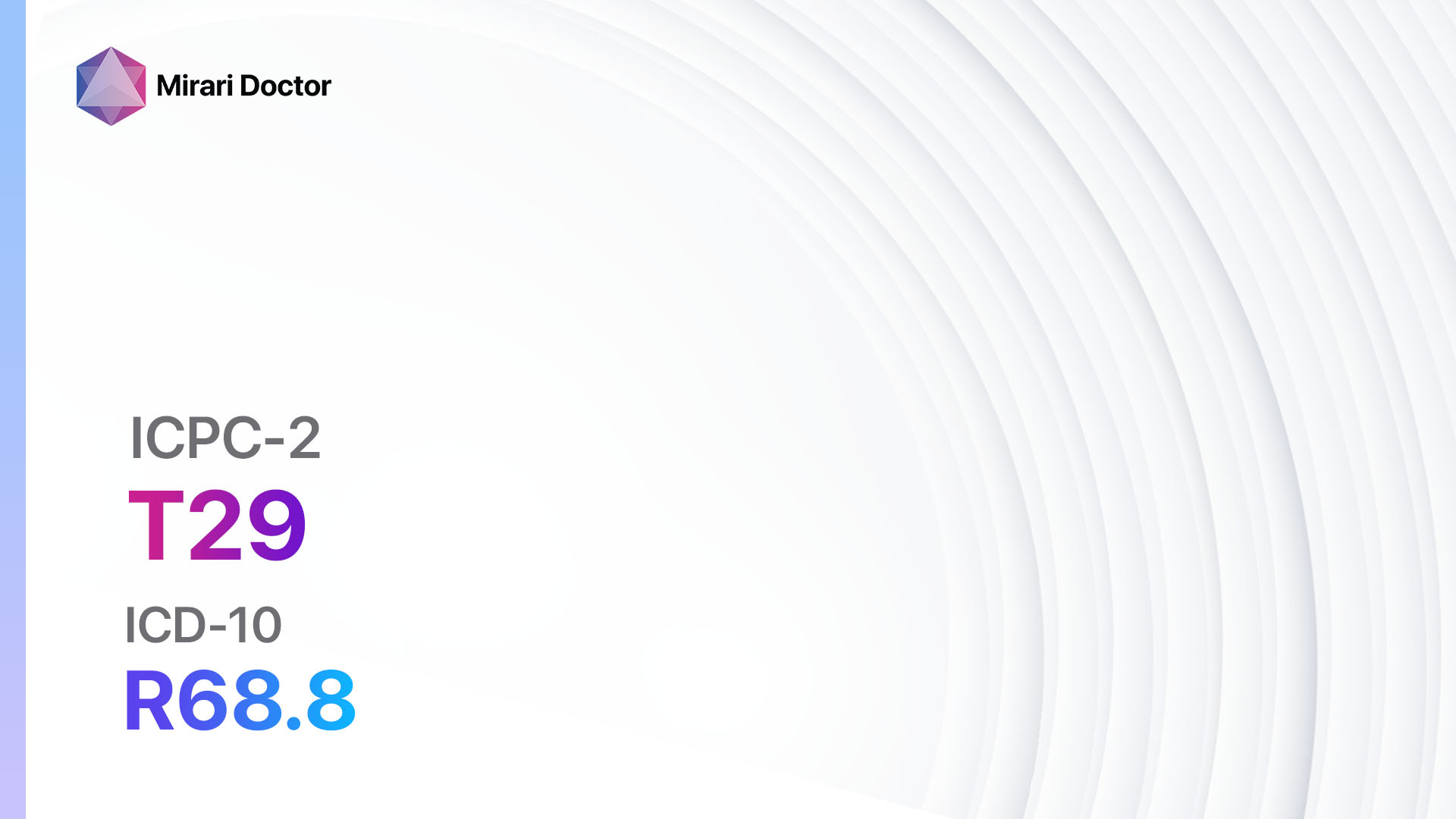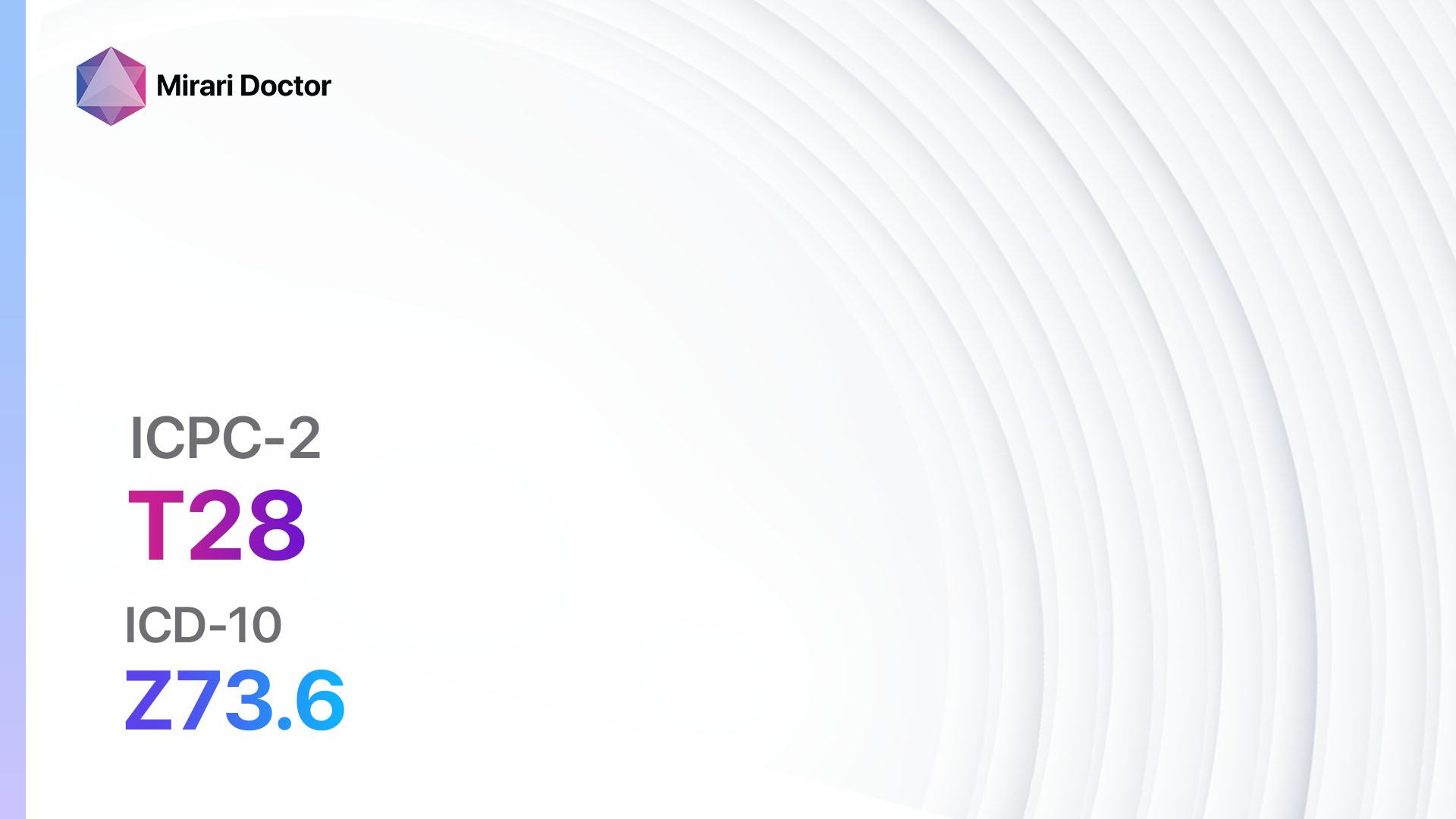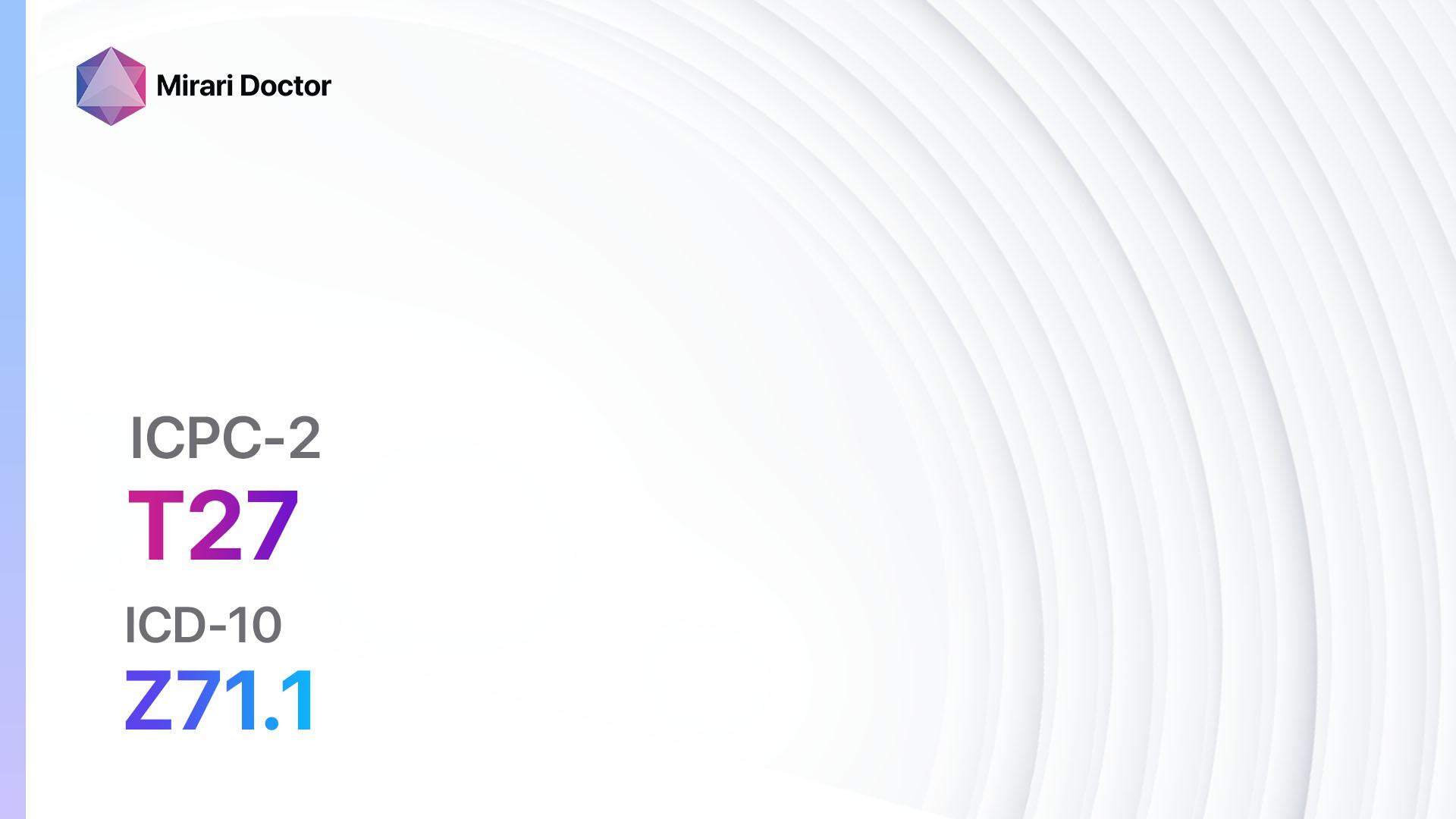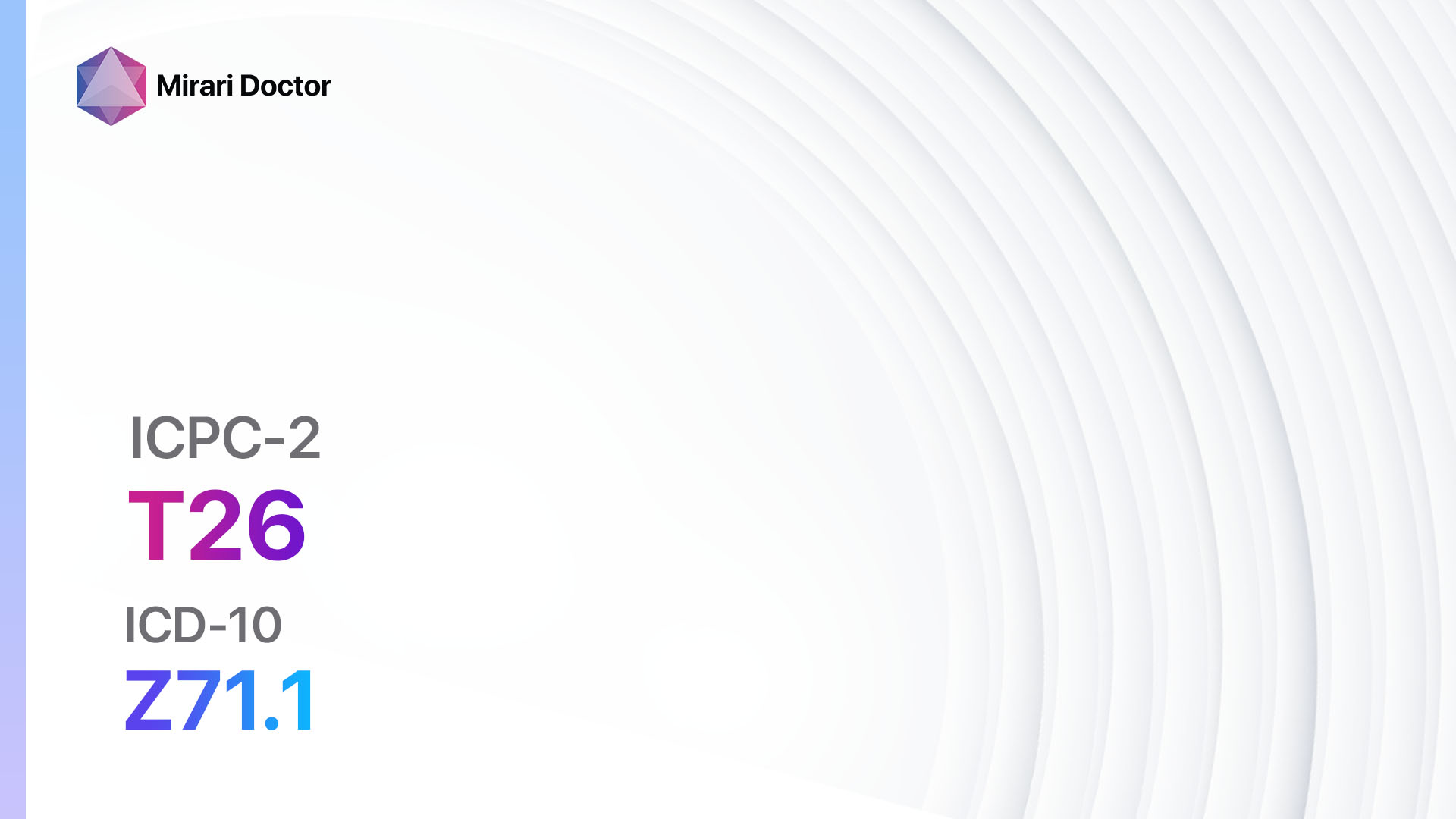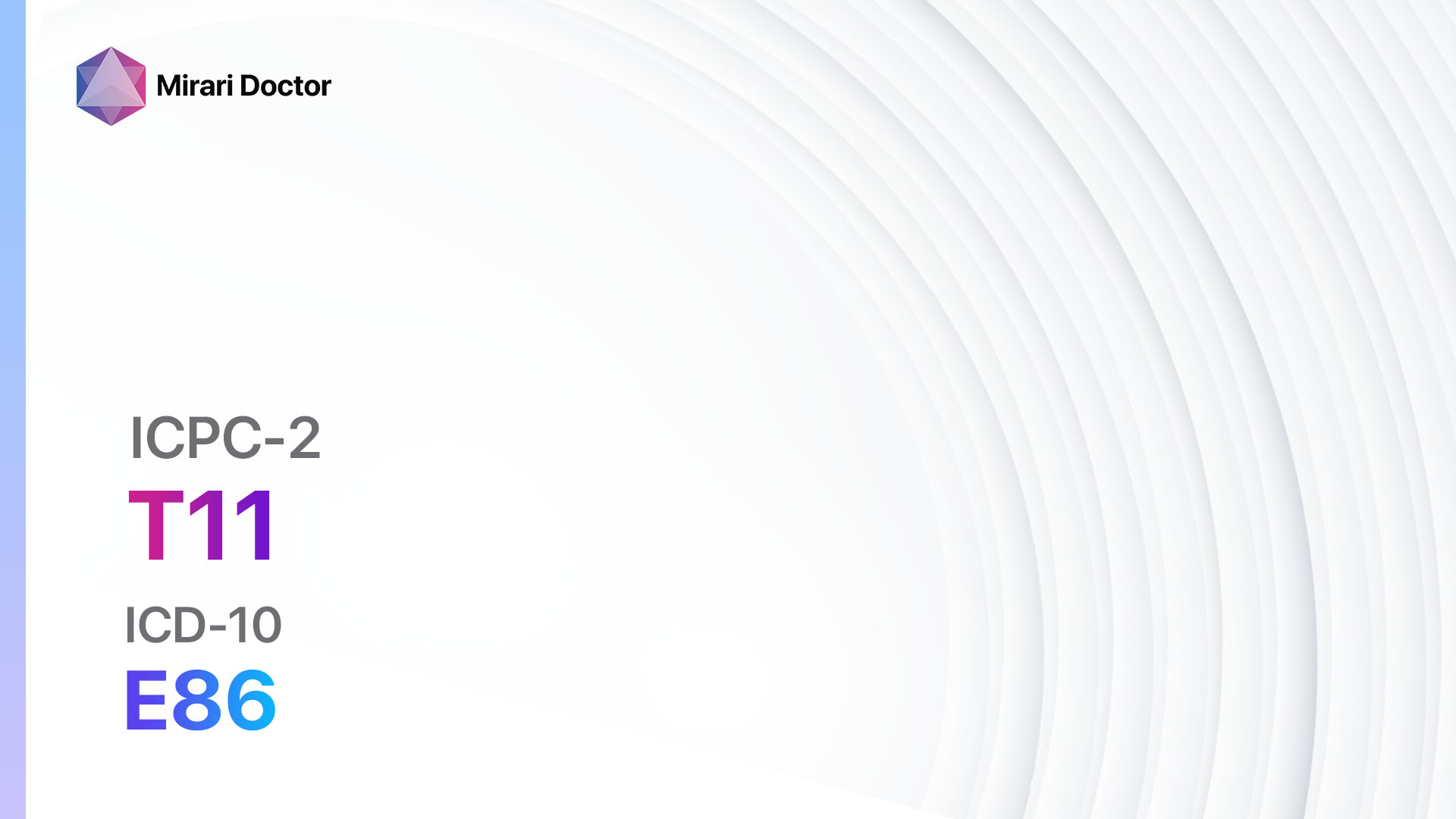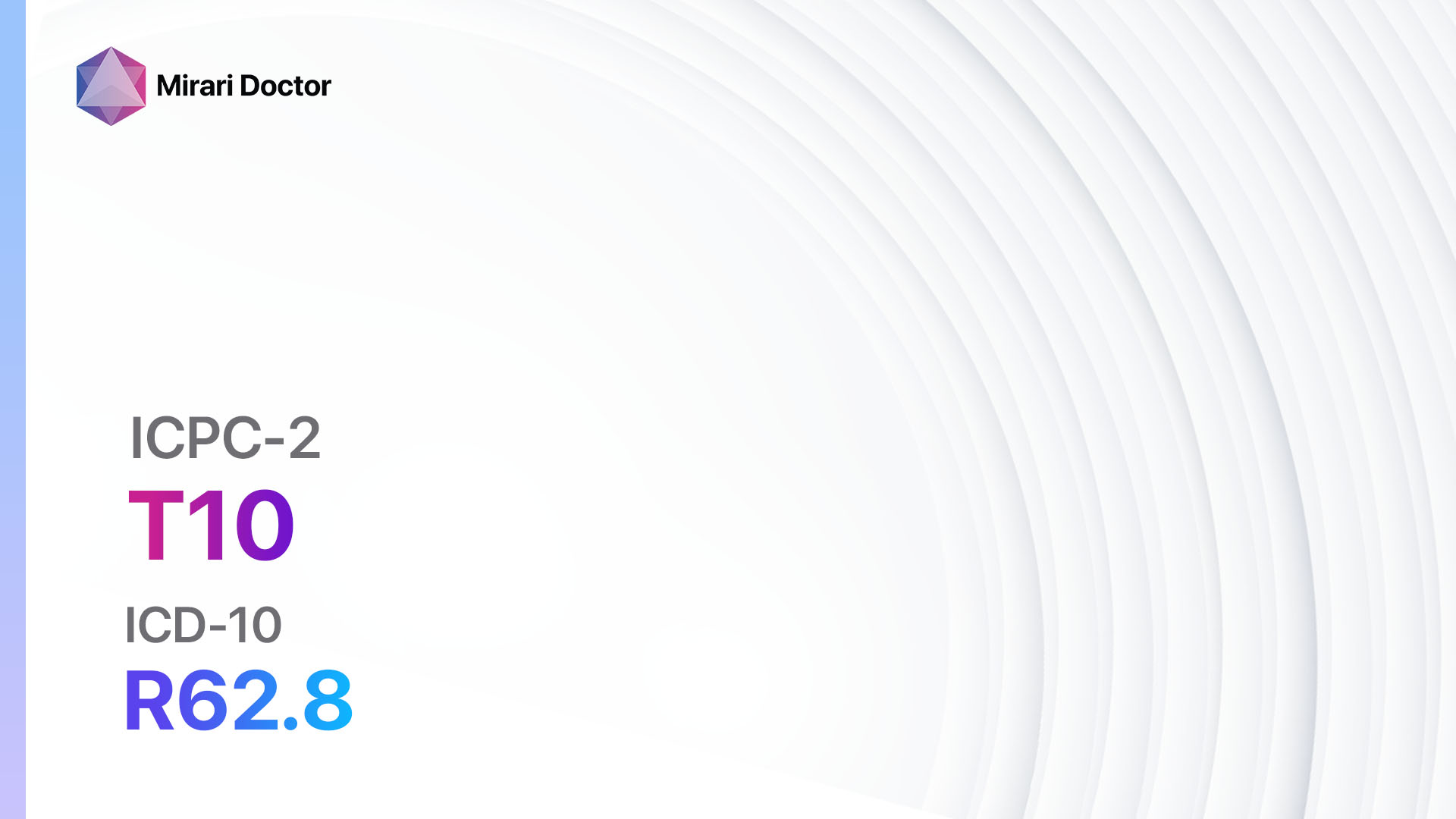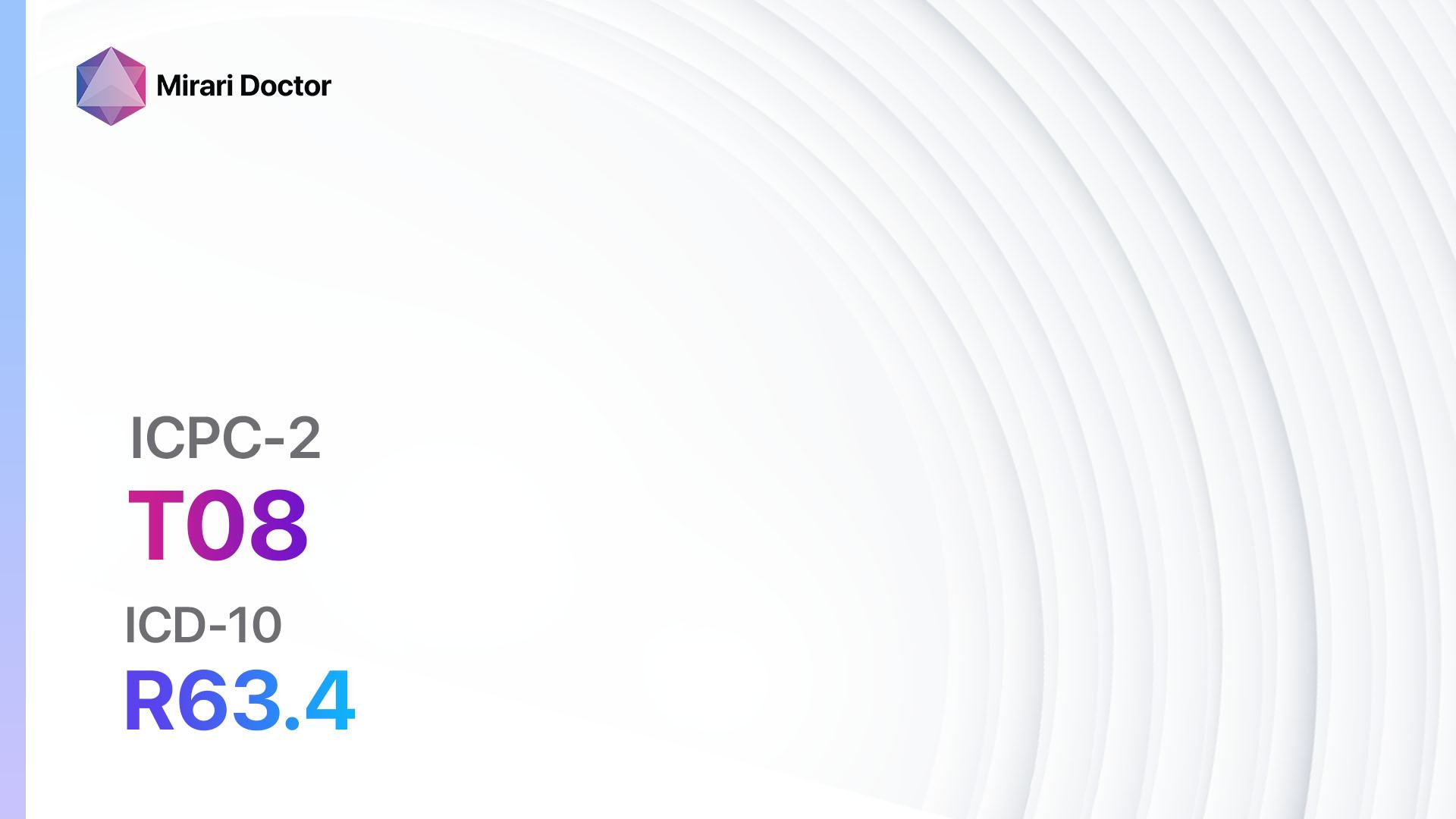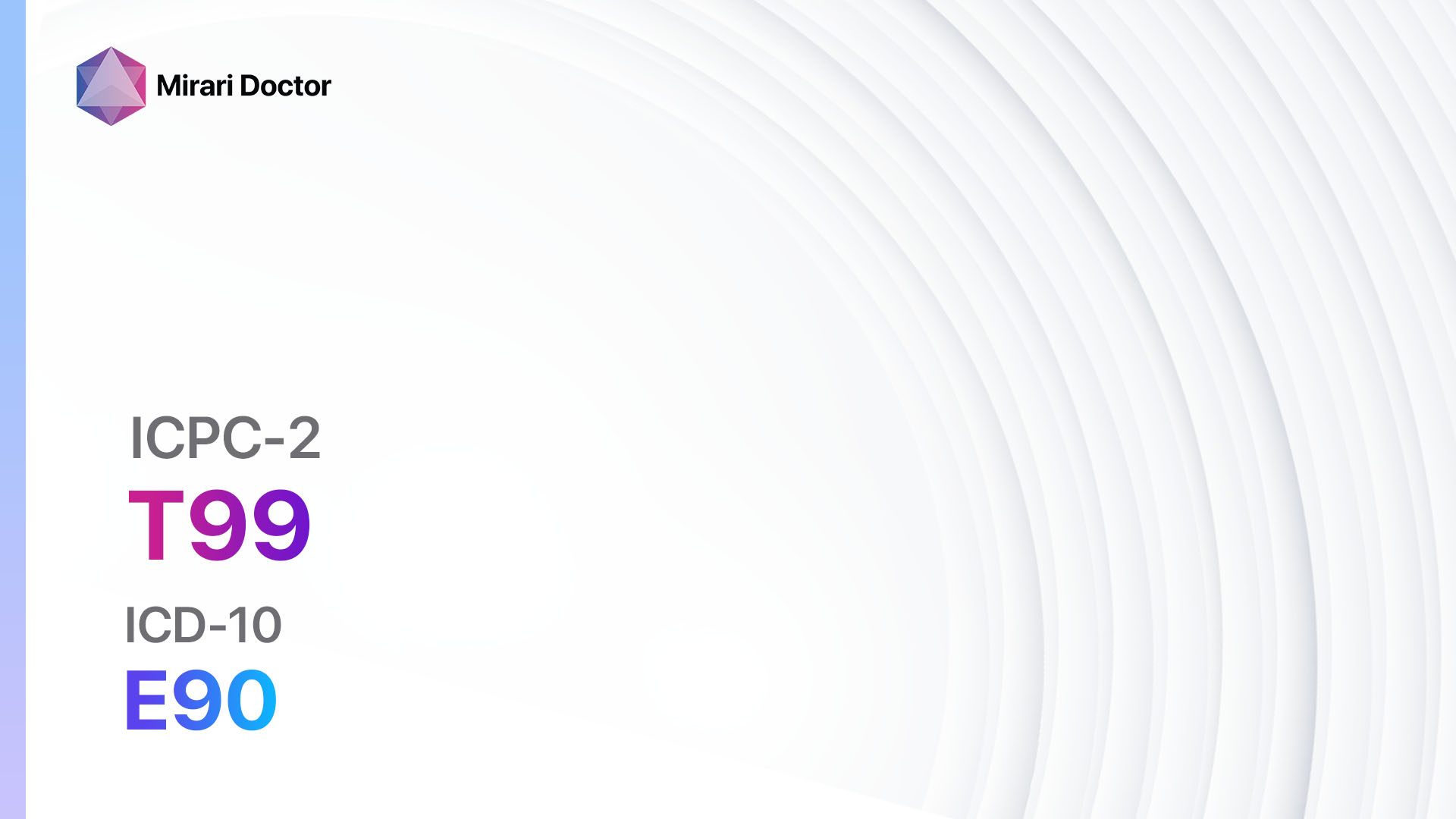
Introduction
Endocrine/metabolic/nutritional disorders encompass a wide range of conditions that affect the endocrine system, metabolism, and nutritional status of individuals. These disorders can have significant impacts on overall health and well-being[1]. The aim of this guide is to provide a comprehensive overview of the symptoms, causes, diagnostic steps, possible interventions, and lifestyle interventions for endocrine/metabolic/nutritional disorders.
Codes
- ICPC-2 Code: T99 Endocrine/metabolic disease other
- ICD-10 Code: E90 Nutritional and metabolic disorders in diseases classified elsewhere
Symptoms
- Fatigue: Feeling tired or lacking energy[2].
- Weight changes: Unexplained weight gain or loss[3].
- Changes in appetite: Increased or decreased appetite.
- Mood changes: Depression, anxiety, or irritability[4].
- Changes in sleep patterns: Insomnia or excessive sleepiness.
- Changes in skin: Dry skin, acne, or darkening of the skin[5].
- Changes in hair: Hair loss or excessive hair growth.
- Changes in menstrual cycle: Irregular periods or changes in flow.
- Changes in sexual function: Decreased libido or erectile dysfunction.
- Changes in bowel movements: Constipation or diarrhea.
Causes
- Hormonal imbalances: Disruption in the production or regulation of hormones[6].
- Genetic factors: Inherited genetic mutations or conditions.
- Autoimmune disorders: Immune system attacks the body’s own tissues.
- Nutritional deficiencies: Lack of essential nutrients[7].
- Medications: Certain medications can affect hormone levels or metabolism.
- Environmental factors: Exposure to toxins or pollutants.
Diagnostic Steps
Medical History
- Gather information about the patient’s symptoms, including their duration and severity.
- Identify any risk factors, such as family history or previous medical conditions.
- Assess the patient’s lifestyle, including diet, exercise, and stress levels.
- Inquire about any medications or supplements the patient is currently taking[8].
Physical Examination
- Perform a thorough physical examination to assess for any physical signs of endocrine/metabolic/nutritional disorders.
- Check for abnormalities in the skin, hair, nails, and mucous membranes.
- Palpate the thyroid gland for any enlargement or nodules.
- Assess body weight, height, and body mass index (BMI).
- Measure blood pressure and heart rate[9].
Laboratory Tests
- Complete blood count (CBC): Assess for any abnormalities in red and white blood cell counts.
- Comprehensive metabolic panel (CMP): Evaluate kidney and liver function, electrolyte levels, and blood glucose levels.
- Thyroid function tests: Measure levels of thyroid-stimulating hormone (TSH), free thyroxine (T4), and triiodothyronine (T3).
- Lipid profile: Assess levels of cholesterol and triglycerides.
- Glucose tolerance test: Evaluate the body’s ability to regulate blood sugar levels.
- Hormone levels: Measure levels of specific hormones, such as cortisol, insulin, or testosterone[10].
Diagnostic Imaging
- Ultrasound: Visualize the structure and function of organs, such as the thyroid or adrenal glands.
- Magnetic resonance imaging (MRI): Provide detailed images of the brain, pituitary gland, or other organs.
- X-rays: Assess bone density or detect abnormalities in the skeletal system.
- CT scans: Obtain cross-sectional images of organs or tissues.
- Nuclear medicine scans: Evaluate the function of specific organs, such as the thyroid or parathyroid glands.
Other Tests
- Genetic testing: Identify any genetic mutations or conditions that may contribute to the development of endocrine/metabolic/nutritional disorders.
- Biopsy: Obtain a tissue sample for further analysis and diagnosis.
- Endoscopy: Examine the gastrointestinal tract or other organs using a flexible tube with a camera.
- DEXA scan: Measure bone density and assess the risk of osteoporosis.
- Sleep study: Evaluate sleep patterns and diagnose sleep disorders.
Follow-up and Patient Education
- Schedule regular follow-up appointments to monitor the patient’s progress and adjust treatment as needed.
- Provide education on the importance of medication adherence, lifestyle modifications, and self-care.
- Offer resources and support for managing symptoms and improving overall well-being.
Possible Interventions
Traditional Interventions
Medications:
Top 5 drugs for Endocrine/metabolic/nutritional disorders:
- Levothyroxine (used for hypothyroidism):
- Cost: Generic versions can be $4-$15/month.
- Contraindications: Recent heart attack, adrenal insufficiency.
- Side effects: Headache, nervousness, weight loss.
- Severe side effects: Chest pain, rapid or irregular heartbeat.
- Drug interactions: Antacids, iron supplements.
- Warning: Regular monitoring of thyroid function is required.
- Metformin (used for type 2 diabetes):
- Cost: Generic versions can be $4-$20/month.
- Contraindications: Severe kidney or liver disease, alcoholism.
- Side effects: Nausea, diarrhea, stomach upset.
- Severe side effects: Lactic acidosis, allergic reactions.
- Drug interactions: Cimetidine, furosemide.
- Warning: Regular monitoring of kidney function is required.
- Insulin (used for type 1 diabetes or advanced type 2 diabetes):
- Cost: Varies depending on the type and brand.
- Contraindications: Hypoglycemia unawareness, allergy to insulin.
- Side effects: Hypoglycemia, weight gain.
- Severe side effects: Severe allergic reactions, hypokalemia.
- Drug interactions: Beta-blockers, ACE inhibitors.
- Warning: Regular monitoring of blood sugar levels is required.
- Orlistat (used for weight loss):
- Cost: Generic versions can be $20-$60/month.
- Contraindications: Chronic malabsorption syndrome, cholestasis.
- Side effects: Oily spotting, abdominal pain, flatulence.
- Severe side effects: Severe liver injury, kidney stones.
- Drug interactions: Cyclosporine, anticoagulants.
- Warning: A low-fat diet is recommended while taking orlistat.
- Calcium and vitamin D supplements (used for osteoporosis):
- Cost: Varies depending on the brand and dosage.
- Contraindications: Hypercalcemia, vitamin D toxicity.
- Side effects: Constipation, stomach upset.
- Severe side effects: Kidney stones, irregular heartbeat.
- Drug interactions: Thiazide diuretics, corticosteroids.
- Warning: Regular monitoring of calcium levels is required.
Alternative Drugs:
- Bisphosphonates (e.g., Alendronate): Used for osteoporosis treatment.
- Glucagon-like peptide-1 (GLP-1) receptor agonists (e.g., Liraglutide): Used for type 2 diabetes management.
- Growth hormone replacement therapy (e.g., Somatropin): Used for growth hormone deficiency.
- Anti-androgens (e.g., Spironolactone): Used for hormonal acne or hirsutism.
- Antithyroid medications (e.g., Methimazole): Used for hyperthyroidism.
Surgical Procedures:
- Thyroidectomy: Surgical removal of all or part of the thyroid gland. Cost: $10,000 to $30,000.
- Bariatric surgery: Various procedures to promote weight loss in individuals with severe obesity. Cost: $15,000 to $35,000.
- Pancreas transplant: Surgical transplantation of a healthy pancreas to treat type 1 diabetes. Cost: $300,000 to $400,000.
- Adrenalectomy: Surgical removal of one or both adrenal glands. Cost: $10,000 to $30,000.
- Parathyroidectomy: Surgical removal of one or more parathyroid glands. Cost: $10,000 to $30,000.
Alternative Interventions
- Acupuncture: May help regulate hormone levels and improve overall well-being. Cost: $60-$120 per session.
- Herbal supplements: Certain herbs, such as ashwagandha or maca root, may have potential benefits for hormonal balance. Cost: Varies depending on the specific supplement.
- Mind-body techniques: Practices like yoga, meditation, or tai chi can help reduce stress and promote hormonal balance. Cost: Varies depending on the class or instructor.
- Dietary modifications: Following a balanced diet rich in fruits, vegetables, whole grains, and lean proteins can support overall health and hormone regulation. Cost: Varies depending on food choices and dietary preferences.
- Stress management techniques: Engaging in activities like mindfulness, deep breathing exercises, or journaling can help reduce stress and promote hormonal balance. Cost: Varies depending on the chosen technique.
Lifestyle Interventions
- Regular exercise: Engaging in physical activity for at least 150 minutes per week can help improve metabolism and hormone regulation. Cost: Varies depending on the chosen activity (e.g., gym membership, fitness classes).
- Healthy diet: Consuming a balanced diet rich in fruits, vegetables, whole grains, and lean proteins can support overall health and hormone regulation. Cost: Varies depending on food choices and dietary preferences.
- Stress management: Practicing stress-reducing techniques, such as meditation, deep breathing exercises, or yoga, can help promote hormonal balance. Cost: Varies depending on the chosen technique (e.g., yoga classes, meditation apps).
- Adequate sleep: Getting enough quality sleep (7-9 hours per night) is essential for hormone regulation and overall well-being. Cost: Varies depending on sleep aids or treatments for sleep disorders.
- Avoidance of toxins: Minimizing exposure to environmental toxins, such as chemicals in cleaning products or pesticides, can support overall health and hormone regulation. Cost: Varies depending on the chosen lifestyle modifications.
It is important to note that the cost ranges provided are approximate and may vary depending on the location and availability of the interventions. It is recommended to consult with healthcare professionals for personalized treatment plans and cost estimates.
Mirari Cold Plasma Alternative Intervention
Understanding Mirari Cold Plasma
- Safe and Non-Invasive Treatment: Mirari Cold Plasma is a safe and non-invasive treatment option for various skin conditions. It does not require incisions, minimizing the risk of scarring, bleeding, or tissue damage.
- Efficient Extraction of Foreign Bodies: Mirari Cold Plasma facilitates the removal of foreign bodies from the skin by degrading and dissociating organic matter, allowing easier access and extraction.
- Pain Reduction and Comfort: Mirari Cold Plasma has a local analgesic effect, providing pain relief during the treatment, making it more comfortable for the patient.
- Reduced Risk of Infection: Mirari Cold Plasma has antimicrobial properties, effectively killing bacteria and reducing the risk of infection.
- Accelerated Healing and Minimal Scarring: Mirari Cold Plasma stimulates wound healing and tissue regeneration, reducing healing time and minimizing the formation of scars.
Mirari Cold Plasma Prescription
Video instructions for using Mirari Cold Plasma Device – T99 Endocrine/metabolic disease other (ICD-10:E90)
| Mild | Moderate | Severe |
| Mode setting: 7 (Immunotherapy) Location: 1 (Sacrum) Morning: 15 minutes, Evening: 15 minutes |
Mode setting: 7 (Immunotherapy) Location: 1 (Sacrum) Morning: 30 minutes, Lunch: 30 minutes, Evening: 30 minutes |
Mode setting: 7 (Immunotherapy) Location: 1 (Sacrum) Morning: 30 minutes, Lunch: 30 minutes, Evening: 30 minutes |
| Mode setting: 7 (Immunotherapy) Location: 4 (Heart, Bile & Pancreas) Morning: 15 minutes, Evening: 15 minutes |
Mode setting: 7 (Immunotherapy) Location: 4 (Heart, Bile & Pancreas) Morning: 30 minutes, Lunch: 30 minutes, Evening: 30 minutes |
Mode setting: 7 (Immunotherapy) Location: 4 (Heart, Bile & Pancreas) Morning: 30 minutes, Lunch: 30 minutes, Evening: 30 minutes |
| Mode setting: 7 (Immunotherapy) Location: 6 (Throat, Lymphatic & Thyroid) Morning: 15 minutes, Evening: 15 minutes |
Mode setting: 7 (Immunotherapy) Location: 6 (Throat, Lymphatic & Thyroid) Morning: 30 minutes, Lunch: 30 minutes, Evening: 30 minutes |
Mode setting: 7 (Immunotherapy) Location: 6 (Throat, Lymphatic & Thyroid) Morning: 30 minutes, Lunch: 30 minutes, Evening: 30 minutes |
| Mode setting: 7 (Immunotherapy) Location: 7 (Neuro system & ENT) Morning: 15 minutes, Evening: 15 minutes |
Mode setting: 7 (Immunotherapy) Location: 7 (Neuro system & ENT) Morning: 30 minutes, Lunch: 30 minutes, Evening: 30 minutes |
Mode setting: 7 (Immunotherapy) Location: 7 (Neuro system & ENT) Morning: 30 minutes, Lunch: 30 minutes, Evening: 30 minutes |
| Total Morning: 60 minutes approx. $10 USD, Evening: 60 minutes approx. $10 USD |
Total Morning: 120 minutes approx. $20 USD, Lunch: 120 minutes approx. $20 USD, Evening: 120 minutes approx. $20 USD, |
Total Morning: 120 minutes approx. $20 USD, Lunch: 120 minutes approx. $20 USD, Evening: 120 minutes approx. $20 USD, |
| Usual treatment for 7-60 days approx. $140 USD – $1200 USD | Usual treatment for 6-8 weeks approx. $2,520 USD – $3,360 USD |
Usual treatment for 3-6 months approx. $5,400 USD – $10,800 USD
|
 |
|
Use the Mirari Cold Plasma device to treat Endocrine/metab/nutrit. dis. other effectively.
WARNING: MIRARI COLD PLASMA IS DESIGNED FOR THE HUMAN BODY WITHOUT ANY ARTIFICIAL OR THIRD PARTY PRODUCTS. USE OF OTHER PRODUCTS IN COMBINATION WITH MIRARI COLD PLASMA MAY CAUSE UNPREDICTABLE EFFECTS, HARM OR INJURY. PLEASE CONSULT A MEDICAL PROFESSIONAL BEFORE COMBINING ANY OTHER PRODUCTS WITH USE OF MIRARI.
Step 1: Cleanse the Skin
- Start by cleaning the affected area of the skin with a gentle cleanser or mild soap and water. Gently pat the area dry with a clean towel.
Step 2: Prepare the Mirari Cold Plasma device
- Ensure that the Mirari Cold Plasma device is fully charged or has fresh batteries as per the manufacturer’s instructions. Make sure the device is clean and in good working condition.
- Switch on the Mirari device using the power button or by following the specific instructions provided with the device.
- Some Mirari devices may have adjustable settings for intensity or treatment duration. Follow the manufacturer’s instructions to select the appropriate settings based on your needs and the recommended guidelines.
Step 3: Apply the Device
- Place the Mirari device in direct contact with the affected area of the skin. Gently glide or hold the device over the skin surface, ensuring even coverage of the area experiencing.
- Slowly move the Mirari device in a circular motion or follow a specific pattern as indicated in the user manual. This helps ensure thorough treatment coverage.
Step 4: Monitor and Assess:
- Keep track of your progress and evaluate the effectiveness of the Mirari device in managing your Endocrine/metab/nutrit. dis. other. If you have any concerns or notice any adverse reactions, consult with your health care professional.
Note
This guide is for informational purposes only and should not replace the advice of a medical professional. Always consult with your healthcare provider or a qualified medical professional for personal advice, diagnosis, or treatment. Do not solely rely on the information presented here for decisions about your health. Use of this information is at your own risk. The authors of this guide, nor any associated entities or platforms, are not responsible for any potential adverse effects or outcomes based on the content.
Mirari Cold Plasma System Disclaimer
- Purpose: The Mirari Cold Plasma System is a Class 2 medical device designed for use by trained healthcare professionals. It is registered for use in Thailand and Vietnam. It is not intended for use outside of these locations.
- Informational Use: The content and information provided with the device are for educational and informational purposes only. They are not a substitute for professional medical advice or care.
- Variable Outcomes: While the device is approved for specific uses, individual outcomes can differ. We do not assert or guarantee specific medical outcomes.
- Consultation: Prior to utilizing the device or making decisions based on its content, it is essential to consult with a Certified Mirari Tele-Therapist and your medical healthcare provider regarding specific protocols.
- Liability: By using this device, users are acknowledging and accepting all potential risks. Neither the manufacturer nor the distributor will be held accountable for any adverse reactions, injuries, or damages stemming from its use.
- Geographical Availability: This device has received approval for designated purposes by the Thai and Vietnam FDA. As of now, outside of Thailand and Vietnam, the Mirari Cold Plasma System is not available for purchase or use.
References
- Jameson, J. L., & De Groot, L. J. (2016). Endocrinology: Adult and Pediatric. Elsevier Health Sciences.
- Chaker, L., Bianco, A. C., Jonklaas, J., & Peeters, R. P. (2017). Hypothyroidism. The Lancet, 390(10101), 1550-1562.
- Heymsfield, S. B., & Wadden, T. A. (2017). Mechanisms, pathophysiology, and management of obesity. New England Journal of Medicine, 376(3), 254-266.
- Bauer, M., Goetz, T., Glenn, T., & Whybrow, P. C. (2008). The thyroid-brain interaction in thyroid disorders and mood disorders. Journal of neuroendocrinology, 20(10), 1101-1114.
- Slominski, A., Wortsman, J., Paus, R., Elias, P. M., Tobin, D. J., & Feingold, K. R. (2008). Skin as an endocrine organ: implications for its function. Drug discovery today: Disease mechanisms, 5(2), e137-e144.
- Melmed, S., Polonsky, K. S., Larsen, P. R., & Kronenberg, H. M. (2015). Williams textbook of endocrinology. Elsevier Health Sciences.
- Shenkin, A. (2006). Micronutrients in health and disease. Postgraduate medical journal, 82(971), 559-567.
- Garber, J. R., Cobin, R. H., Gharib, H., Hennessey, J. V., Klein, I., Mechanick, J. I., … & Woeber, K. A. (2012). Clinical practice guidelines for hypothyroidism in adults: cosponsored by the American Association of Clinical Endocrinologists and the American Thyroid Association. Thyroid, 22(12), 1200-1235.
- Bickley, L. S., Szilagyi, P. G., & Hoffman, R. M. (2017). Bates’ guide to physical examination and history taking. Wolters Kluwer.
- Burtis, C. A., Ashwood, E. R., & Bruns, D. E. (2012). Tietz textbook of clinical chemistry and molecular diagnostics. Elsevier Health Sciences.
Related articles
Made in USA


